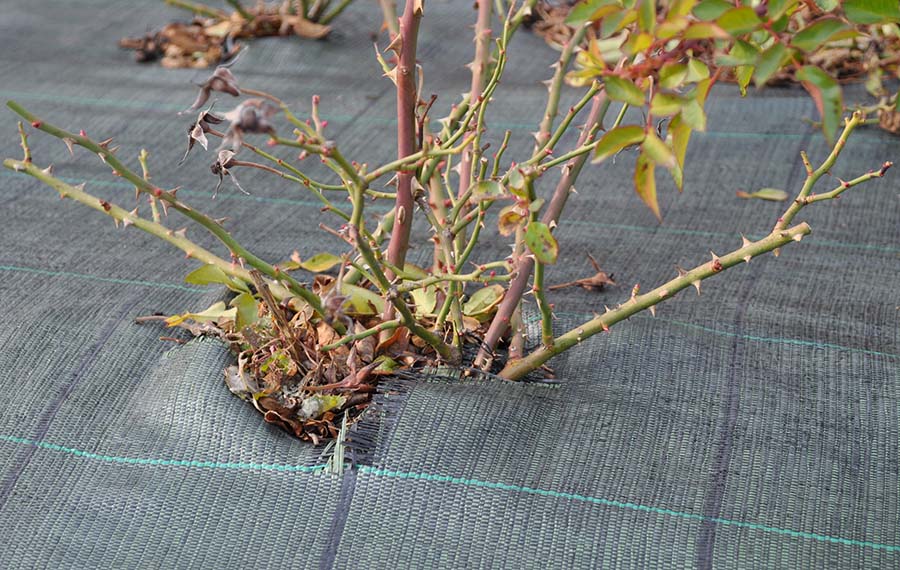While the practical “how-to” of using woven landscape fabric is essential, sometimes, the best way to understand its true value is to see it in action. This final chapter will explore a couple of inspiring scenarios that illustrate the transformative potential of durable slit-film woven landscape fabric in creating beautiful, low-maintenance, and productive outdoor spaces.
Scenario 1: Cultivating a Low-Maintenance and Prolific Vegetable Garden
The Challenge
Mark was determined to establish a productive vegetable garden. His corner lot meant the garden would be visible from the street, so keeping it well-maintained and attractive was a must. In previous homes, he had struggled with maintaining the pathways between his planting beds, which quickly became havens for weeds and required constant attention. Mark also wanted to minimize soil disturbance in his beds and find a way to suppress weeds directly around his vegetables without resorting to chemicals or excessive hand-weeding.
Mark’s goals for the pathways were clear: he wanted an attractive solution for effective weed control, good drainage to avoid slippery surfaces, and a stable footing for easy movement. For his planting beds, he prioritized maintaining healthy soil conditions and minimal weed competition.
The Solution
Mark addressed the pathways first. After clearing the ground, he installed a layer of slit-film woven landscape fabric, ensuring a generous overlap between seams and securing it firmly with staples. He chose a fabric with good permeability to allow rainwater to drain through to prevent puddling and slippery conditions. For an attractive walking surface, he opted for a shallow layer of gravel over the fabric to promote drainage and provide a stable footing for walking. While the woven fabric would prevent most weeds from pushing through from the soil below, the gravel surface added an additional physical obstruction, making it even more difficult for stray, tenacious weeds to emerge over time. The gravel would also help keep the fabric in place in high-traffic areas.
Mark took a different approach to his planting beds. After preparing the soil with compost, he laid out the woven landscape fabric directly over the soil. He made precise ‘X’ shaped cuts and applied gentle heat to fuse the fibers before planting his vegetable seedlings. The woven fabric provided a direct barrier against weeds germinating in the soil around his plants, significantly reducing competition for water and nutrients.
While the fabric blocked sunlight to the underlying soil, Mark realized that airborne weed seeds could still germinate if he applied mulch. To address this and help retain moisture in the soil, Mark applied a thin layer of shredded bark around the base of his vegetables, right over the cutouts. The key was to use a minimal amount—just enough to retain moisture without creating a substantial soil layer on top of the fabric.
The Results
Over the growing season, Mark was delighted with his system. The gravel pathways drained well and remained weed-free, even after seasonal rains. In his planting beds, the woven fabric significantly reduced weed pressure, improving his yields and making an attractive garden that was the envy of his neighborhood.
Scenario 2: Protecting Precious Blooms in an Heirloom Rose Garden
The Challenge
The Miller Family has lovingly maintained their historic property’s heirloom rose garden for generations. It features a collection of unique and often delicate rose varieties and attracts a steady stream of visitors, including horticultural enthusiasts and local garden clubs. However, the roses have proven to be particularly vulnerable to competition from aggressive, invasive weeds, and maintaining the garden requires countless hours of careful hand-weeding. Furthermore, pathways between the beds, used by numerous visitors, often become unstable, muddy, and difficult to navigate, especially after rain. The Miller family sought a solution that would simultaneously reduce their labor, protect their precious roses, and ensure the garden remained a beautiful and accessible showcase.
The Solution
Understanding that installing weed fabric around established plants requires extra care and planning, the Millers decided to install BTL Liner’s slit-film woven landscape fabric in key areas of their rose garden.
For the pathways between rose beds, they began by clearing and leveling the ground to create an even and stable surface. They installed wide panels of the woven fabric, ensuring ample overlap and anchoring it securely with heavy-duty staples. They chose black weed fabric to blend unobtrusively with an attractive deep gray crushed stone that enhanced the colorful roses.
Slit-film woven geotextiles are specifically designed for soil stabilization and separation, making them a perfect choice for walkways. The woven fabric keeps the crushed stone from sinking into the underlying soil, ensuring a stable, mud-free walking surface. It also inhibits weed growth, a key factor in reducing maintenance demands.
Protecting established heirloom rose bushes requires a different approach than planting through the fabric. To avoid disturbing the existing canes, the family opted to use two parallel panels of woven fabric for each row of roses. They laid one panel on each side of the rose bushes, running lengthwise along the row. Along the edges of each panel closest to the roses, they cut out sections to accommodate the existing canes and sealed the cuts using heat. The two parallel panels overlapped in the center of the row, surrounding the bud union while minimizing the open area for weed growth. To avoid having to cut the weed fabric to run along both sides of the row, they ordered narrow rolls, which avoided waste, reduced labor, and minimized fraying from cut edges.
The Results
The Miller Family noticed a significant difference after the upgrades. No longer struggling against competition from aggressive weeds, the roses exhibited healthier growth and more abundant blooms. The pathways remained dry and clear of weeds, providing a welcome respite from constant maintenance. Even better, the crushed stone surface, supported with permeable slit film underlayment, provided safe, reliable access for visitors.
Your Next Steps: Embracing a Weed-Free Future
As you reach the end of this guide, we hope you’re feeling inspired and empowered to take control of your garden and landscape with the help of our durable slit-film woven landscape fabric. The frustrating and time-consuming battle against weeds doesn’t have to be a constant struggle.
Consider the areas in your garden or landscape where weeds are persistent, and give us a call. We’ll guide you in taking measurements and planning your installation for a beautiful, low-maintenance outdoor space. You choose how to spend your reclaimed time and energy!




